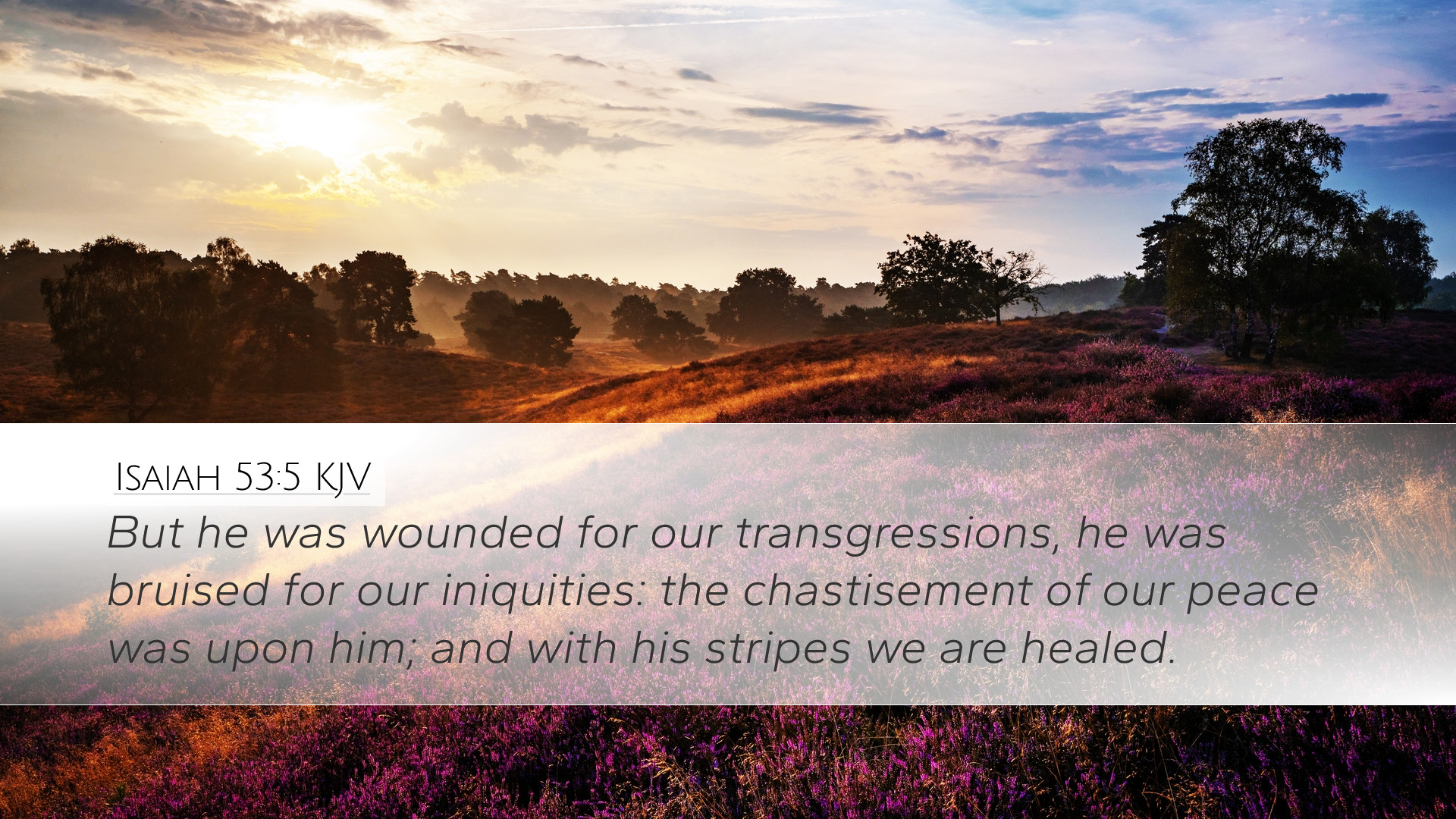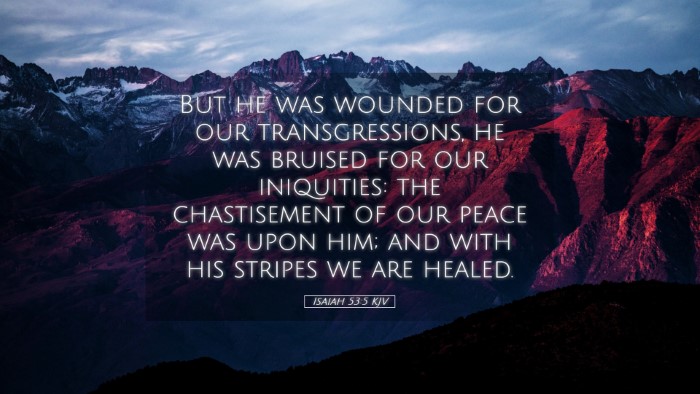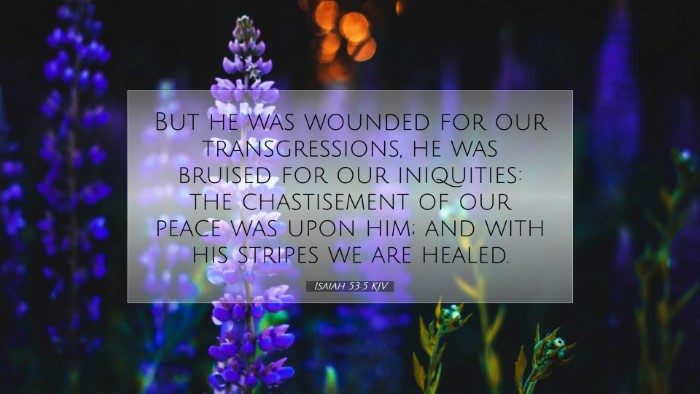Commentary on Isaiah 53:5
Bible Verse: "But he was wounded for our transgressions, he was bruised for our iniquities: the chastisement of our peace was upon him; and with his stripes we are healed." (Isaiah 53:5)
Introduction
This profound verse from Isaiah encapsulates the essence of Christ’s atoning sacrifice. It provides a deep theological foundation for the understanding of sin, redemption, and healing through suffering. The prophetic nature of this passage anticipates the suffering of the Messiah and reveals the purpose behind His afflictions—redemption and healing for humanity.
Wounded for Our Transgressions
Exegesis of ‘Wounded’: The term 'wounded' can be understood as being pierced or deeply afflicted. Matthew Henry notes that this affliction was for our transgressions, indicating not just physical suffering but the spiritual and moral implications of sin. Each wound was borne as a direct consequence of human rebellion against God.
Albert Barnes’ Insight: He emphasizes the idea that the suffering servant was not merely a martyr but a willing sacrifice, a divine substitution for the sins of humanity. The act of being 'wounded' highlights the severity and gravity of our iniquities, thus demonstrating God’s love and justice coalescing in Christ.
Bruised for Our Iniquities
The term 'bruised' signifies a more internal affliction, one that speaks to the emotional and spiritual turmoil caused by sin. Adam Clarke elaborates on this by suggesting that the bruising refers to the consequences of sin that manifest in both physical and spiritual dimensions. This bruising highlights the intensity of suffering meant to take away our guilt.
This phrase signifies the personal nature of sin. Just as the suffering servant was bruised, so too would our own sins lead to personal and collective bruising. Our iniquities brought about brokenness, but through His bruising, healing becomes possible.
The Chastisement of Our Peace
The ‘chastisement of our peace’ signifies the corrective discipline that was placed upon the Messiah for our benefit. Henry discusses how this chastisement was essential for establishing peace between God and humanity. It is a reminder that God’s justice requires satisfaction, which is fulfilled in Christ.
Barnes’ Observation: The ‘peace’ here indicates both personal and communal aspects of peace. The suffering servant endured the necessary discipline that would allow for reconciliation and calm in the larger context of humanity’s strife against sin.
As students and scholars reflect on this aspect, they can appreciate how Christ’s chastisement brings not only forgiveness of sins but also the restoration of a right relationship with God. The very peace our souls crave comes through His suffering.
With His Stripes We Are Healed
The concluding phrase of this verse brings forth the promise of healing. The ‘stripes’ refer to the visible marks left by scourging, a brutal form of punishment that brought Christ to the depths of human suffering. Importantly, this suffering was not in vain; it serves a redemptive purpose. Clarke remarks on the profound truth that through His suffering, we are offered more than mere physical restoration; rather, it symbolizes the holistic salvation provided for every aspect of human need.
Theological Implications: This relationship between suffering and healing is central to Christian doctrine. The suffering servant takes upon Himself not just our sins but also the resultant effects of sin, including physical afflictions and spiritual brokenness. It supports the doctrine of atonement that permeates the New Testament teachings, particularly in Peter's affirmation that “by His stripes you were healed” (1 Peter 2:24).
Conclusion
This verse is foundational for understanding the nature of Christ's redemptive work. It emphasizes His willing sacrifice in bearing our sins and highlights the profound connection between His suffering and our healing. In applying these truths, pastors, students, and theologians are encouraged to delve deeper into the implications of these prophetic declarations.
As believers, understanding that Christ's wounds facilitate our healing should deepen our appreciation for His sacrifice and bolster our faith in His ability to restore not only our relationship with God but also our very lives. The message of Isaiah 53:5 is an invitation to embrace the fullness of Christ's atonement, encompassing spiritual, emotional, and physical wholeness.


